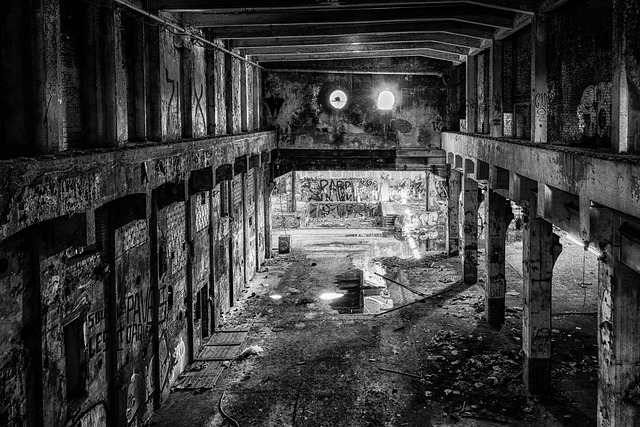Construction utility mapping leverages advanced technologies like ground-penetrating radar (GPR) and electromagnetic location devices to create precise digital maps of underground utilities, enhancing safety, streamlining project planning, and preventing costly damage during excavation. This method is crucial in today's fast-paced construction landscape, where efficient mapping minimizes delays, risks, and infrastructure damage by providing real-time data integration for comprehensive site navigation and optimized route planning.
In modern construction, efficient and precise identification of underground utilities is paramount to prevent damage, ensure worker safety, and expedite project timelines. Traditional methods often fall short, highlighting the need for advanced tools in construction utility mapping. This article explores cutting-edge technologies such as Ground-Penetrating Radar (GPR), Radio Detection (RD), and LiDAR scanning, while also delving into software solutions like GPS-based mapping and cloud-based platforms. We discuss best practices to implement these tools effectively, ensuring safer, more efficient construction sites.
Understanding Construction Utility Mapping
Construction sites are complex environments with numerous underground utilities, including water pipes, gas lines, and electrical cables. Effective project management demands a comprehensive understanding of construction utility mapping—the process of identifying, documenting, and visualizing these critical infrastructure assets beneath the surface.
Accurate construction utility mapping is essential for avoiding costly damage during excavation. It helps contractors locate utilities precisely, enabling them to plan digging operations safely and efficiently. By integrating advanced technologies like ground-penetrating radar (GPR) and electromagnetic location devices, construction professionals can now obtain detailed maps of underground utilities in real time, enhancing project safety and reducing the risk of disruptions or failures during construction.
– Definition and significance in modern construction projects
In modern construction projects, identifying and locating underground utilities accurately is paramount for safety, efficiency, and avoiding costly damage. Construction utility mapping refers to the advanced practices and technologies employed to create detailed digital representations of subterranean infrastructure before breaking ground. This process involves utilizing sophisticated tools such as ground-penetrating radar (GPR), electromagnetic location devices, and remote sensing techniques to detect pipes, cables, and other utilities hidden beneath the surface.
The significance of construction utility mapping cannot be overstated. It allows contractors to navigate complex sites with confidence, minimizing risks associated with accidental strikes on critical utilities. By identifying these structures in advance, construction teams can plan projects more effectively, ensuring efficient route planning for new installations or modifications without disrupting existing services. This proactive approach not only saves time and money but also enhances project timelines and overall success rates.
– Challenges of traditional utility location methods
In the fast-paced world of construction, accurately identifying and locating underground utilities is a significant challenge that cannot be overlooked. Traditional methods, such as manual probing and marking, often fall short due to their time-consuming nature and inherent risks. Construction sites are dynamic environments with frequent changes in terrain and utility layouts, making it difficult for workers to keep up with accurate maps. This can lead to costly delays, safety hazards, and potential damage to critical infrastructure.
The need for more efficient and reliable solutions has spurred the development of advanced tools for construction utility mapping. These modern systems employ cutting-edge technology like ground-penetrating radar (GPR) and radio frequency identification (RFID) to create detailed, real-time images of underground utilities beneath the construction site. By integrating this data into comprehensive digital maps, project managers gain a bird’s-eye view of the entire site, enabling them to plan and execute projects with enhanced precision and safety.
Advanced Technologies for Accurate Utility Detection
Advanced technologies are transforming the way we identify and map underground utilities at construction sites, enhancing safety and efficiency. Tools like ground-penetrating radar (GPR) and electromagnetic induction (EM) sensors offer accurate, non-invasive methods to detect pipes, cables, and other utilities hidden beneath the surface. These advanced technologies provide detailed construction utility mapping, allowing contractors to plan projects with precision, avoiding costly damage during excavation.
By utilizing these innovative tools, construction teams can significantly reduce the risk of hitting unseen utilities, leading to safer working conditions and fewer delays. Real-time data acquisition and precise location tracking enabled by GPR and EM sensors ensure that every inch of the construction site is thoroughly surveyed, providing a comprehensive picture of the underground utility layout. This technology revolutionizes construction utility mapping, setting new standards for safety and project management.
Construction utility mapping has evolved significantly, transitioning from manual, time-consuming processes to advanced technological solutions. By leveraging innovative tools and techniques, such as ground-penetrating radar, electromagnetic location devices, and remote sensing technologies, modern construction projects can now achieve unprecedented accuracy in identifying and mapping underground utilities. This not only enhances safety by reducing the risk of damage during excavation but also streamlines project timelines and budgets. As technology continues to advance, the future of construction utility mapping promises even greater efficiency and precision, further cementing its importance in the industry.
